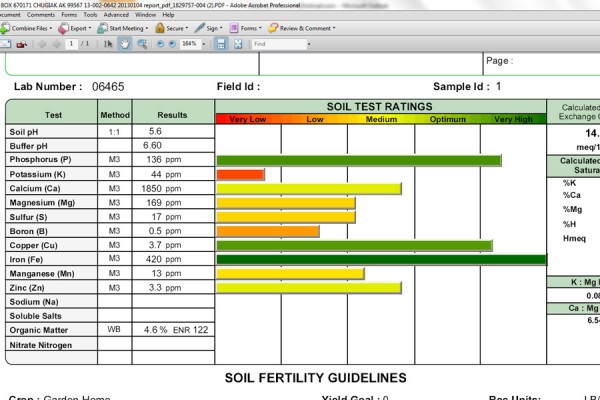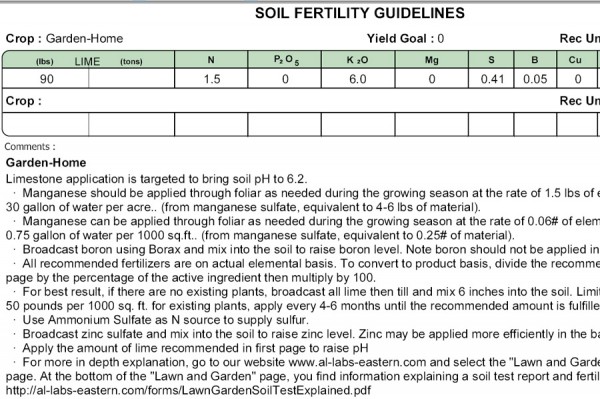Feeding the soil
Here in Alaska, when one puts in a garden, there’s a very high chance that the soil has never been cultivated before. What little soil we have up here is acidic and lacking in many nutrients. Last year we put in our big vegetable garden in the yard. We tilled the native soil, added a few loads of topsoil, and some composted chicken litter from the coop. Because we were in a hurry to put in our vegetables, we didn’t have the time for a soil test. Although our harvest was impressive, I still wanted to get a feel for the soil, so I sent some soil to be tested this winter. The results (below) were surprising.
Why should you get a soil test?
In Alaska, our soil is very “young” in geological terms. There’s not much topsoil, and underneath this thin layers is often glacial moraine or permafrost. Even when getting “topsoil” from local sources, the soil is likely acidic and contains an unbalanced profile of nutrients.
Where do you get a soil test?
I get my soil tested through A&L Eastern Laboratories. They have a quick turnaround time, an easy to navigate website, and they can email your results. There are many other options out there, but A&L is the only one I’ve used.
How much does a soil test cost?
It depends on the test you get. I always get the test recommended for home gardeners growing vegetables (A&L test ‘S3’), but there are many different tests to choose from. The test I get (which is recommended for gardens) costs about $15 and includes recommendations for adding fertilizer.
How do I collect samples?
In late fall, I use a simple garden trowel and dig a number of holes about 6″ deep. then I use the trowel to “shave” the sides of the hole and place the soil in a ziploc bag. Most soil testing companies want a cup or two of soil, so I simply fill up a gallon bag. By collecting little samples from around the garden, I can be fairly sure that my test results will be as representative as possible.
How do I read my results?
Take a look at the pictures below. A&L has a handy info-graphic of your results. This soil test result was from the garden I put in last year. The soil was a combination of virgin soil from the yard, topsoil I purchased, fish bone meal, and composted chicken litter.

As you can see, the soil is very acidic (5.6) with less than 5% organic matter. The soils is also low in potassium, sulfur, and boron. There’s tons of iron in the soil too, which is surprising.

The second part of the document gives you recommendations. The recommendations are based on pounds per 1000 sq/ft. As you can see I need to add lots of lime, 6lbs of potassium, and 1.5lbs of nitrogen this spring.
Where do I get organic fertilizer here in Alaska?
My favorite fertilizer, which is local, organic, and affordable (when bought in bulk) is the fish-bone meal from Alaska Sea-Ag. They process it from the fish waste from the commercial fishing industry. My only complaint is that your garden will smell “fishy” for a week or two.
For raising potassium levels, I tend to use Sulfate of Potash, which also increases soil sulfur levels. You can pick it up at Alaska Mill and Feed.
I intend to amend the soil this year, then wait 2-3 years to test again. My compost pile is starting to grow, and I expect that the composted chicken litter, garden waste, and ashes from the wood stove should help deliver additional nutrients to the soil.
The sun is starting to feel the slightest bit warm, and we just started our storage onions from seed yesterday. All the best for your upcoming garden season!